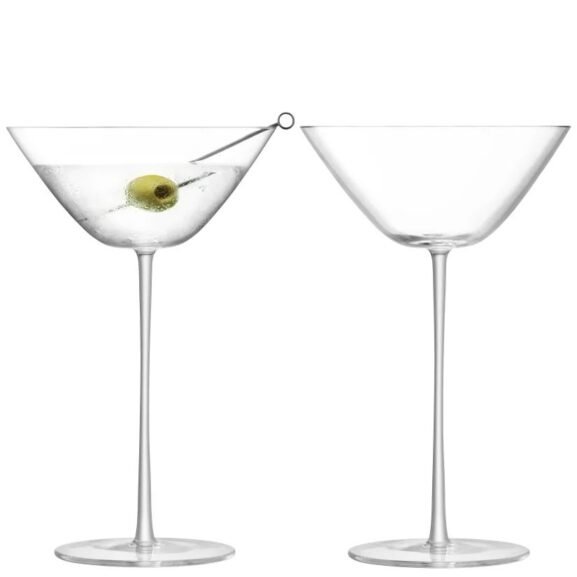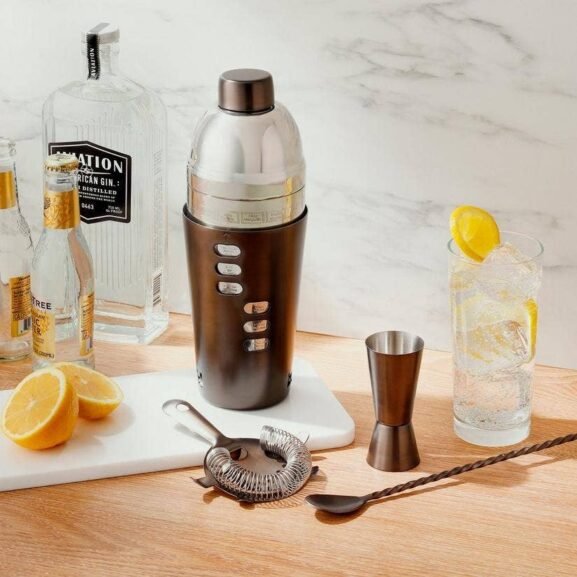Coupes vs Flutes: The Great Champagne Glass Showdown
The wine industry is full of hot takes. French Chardonnay versus California. Old world versus new. Screw caps versus cork. One of the most divisive topics within wine? What kind of glass to serve your Champagne in.
Some professionals firmly side with coupes, the shallow-bowled cocktail glass supposedly popularized by Marie Antoinette. Others will argue that flutes are the one true vessel. (And a smaller third contingent will say that only a white wine glass should be used to serve sparkling wine.)
So, court is in session.
We let fans of coupes and flutes—the most popular options—duke it out, and debate why they love one glass over the other.
Gloves are off, glasses are full: here are the pros and cons of both coupes and flutes.
Team Flute Presents Its Argument
To start this debate, we hear from Team Flute first. After all, the narrow rimmed, tall glasses instantly come to mind when people say “Champagne.”
A Glass Built for Bubbles
Kevin Goyenechea, the general manager at Huso, a restaurant from two-time Top Chef winner Buddha Lo, is a big flute guy. His main argument? A coupe’s wider shape breaks down effervescence more quickly than a flute will, and flattens out the bright bubbles.
“While coupes are very pretty and can be fun for parties, a flute’s narrow body does a much better job of preserving and showcasing the different qualities of a wine,” says Goyenechea.
Billie Rolla, senior wine educator at Foley Family Wines & Spirits, agrees. “The shape of the flute really shows off the slow march of all those beautiful bubbles that make sparkling wine so special,” she says.
Goyenechea also finds that the elegant, slender flute plays well with fancy flavors. Marky’s Caviar is a menu staple at Huso, and (naturally) so is Champagne—served strictly in a flute. “We find the quality of the bubbles in a flute allow the delicate flavors of the Champagne to complement the oceanic notes of the caviar,” he says.
Concentrate Aromas? Or Let the Wine Breathe?
So, the quality of effervescence is key here to the flute. But the sparkle of Champagne is only part of the equation. Next we tackle how the taper affects the smell and taste of the wine.
“A flute will concentrate the aromas of your Champagne rather than let them waft out of the large bowl of a coupe,” Goyenechea says. “In my opinion, this creates a far more enjoyable drinking experience.”
How the glassware coaxes out flavors makes a big difference when it comes to the nuances of a bottle.
Peter Marcy, the sommelier and beverage director at Black Walnut Inn & Vineyard and Grange Estate, enjoys a flute with younger sparkling wines. “The narrow shape truly helps concentrate the aromas into such a small window that can be really fascinating, especially for youthful sparkling wines,” he says.
However he avoids flutes with older wines. “Due to the lack of oxygen, the wine doesn’t have the opportunity to evolve inside of a flute,” he says. “With a wider glass, like a coupe, the ratio of oxygen to wine is greater, allowing for a more significant evolution of the wine in the glass. This is paramount when drinking an aged, more complex Champagne or sparkling wine.”
Visual Appeal
Next we tackle style points.
“Visually, both glasses have their own unique strengths,” says Goyenechea, faithful defender of the flute. He’s not against coupes, per se, they just don’t fit the vibe of his high-end menu.
“Coupes are great if you’re planning on building a Champagne tower for a New Year’s Eve party, but generally speaking I prefer the elegance of a thin stemmed flute for everyday use,” he says. “You can set almost any dining room with flutes and instantly improve the visual standard of the space. Coupes just don’t have that same effect!”
A Rebuttal from Team Coupe
The big draw of coupes? They’re celebratory, party-starting and chic—just like a great sparkling wine.
Alexandra Anderson, the beverage director at Peychaud’s in New Orleans, rides for team coupe. “I believe a coupe is far superior,” she says.
let adType_674200ef350da = “leaderboard”;
// Create the element
let script_674200ef350da = document.createElement(“script”);
script_674200ef350da.innerHTML = `
window.googletag = window.googletag || {cmd: []};
googletag.cmd.push(function() {
var mapping;
// Size mapping for leaderboard ads
var lbmapping = googletag.sizeMapping()
.addSize([1024, 0], [[970, 250], [970, 90], [1, 1], [728, 90]])
.addSize([728, 0], [[728, 90], [1, 1]])
.addSize([320, 0], [[1, 1], [300, 50], [300, 100], [320, 50], [320, 100]])
.addSize([0, 0], [[1, 1], [320, 50]])
.build();
// Size mapping for med rectengle ads
var medrecmapping = googletag.sizeMapping()
.addSize([1024, 0], [[300, 600],[300, 250]])
.addSize([728, 0], [300, 250])
.addSize([320, 0], [[1, 1],[300, 250]])
.addSize([0, 0], [[1, 1], [300, 250]])
.build()
//var lbSlots = [[[320, 100], [728, 90], [300, 100], [1, 1], [300, 50], [970, 250], [320, 50], [970, 90]]];
//var medrecSlots = [[300, 600], [1, 1], [300, 250]];
mapping = adType_674200ef350da == ‘leaderboard’ ? lbmapping : medrecmapping;
googletag.defineSlot(‘/39808611/article_page/article_leaderboard_1’, [],
‘div-gpt-ad-674200ef350da’).addService(googletag.pubads()).defineSizeMapping(mapping);
googletag.pubads().enableSingleRequest();
googletag.pubads().collapseEmptyDivs(); //maybe optional
googletag.pubads().refresh(); //maybe optional
googletag.enableServices();
});
`;
//checking to see if script is inserted in the header successfully
if (document.head.appendChild(script_674200ef350da)) {
//variable holding the rendering body
document.getElementById(“gptBodySection-674200ef350da”).innerHTML = `
googletag.cmd.push(function() { googletag.display(div-gpt-ad-674200ef350da); });
`;
}
A Glass for History Buffs
Flutes don’t have the same deep-rooted connection to Champagne, Anderson notes, as coupes do.
Slender, stylish flutes rose to prominence at the end of the 19th century, alongside the rise of the neo-Gothic and Art Nouveau movement. “But flutes really became popular after World War II,” she says.
Champagne houses—reeling and recovering from the war—promoted flute glasses as the preferred glass to celebrate Champagne’s festive effervescence and concentrate the delicate aromas. The flute has stuck around since then.
Coupes, on the other hand, have more history to them. Champagne fans have sipped from them for centuries.
“If I want to relish and enjoy all the senses that Champagne can bring to the world I’m going to choose the way that Marie Antoinette would drink it,” says Anderson. “And that’s out of a coupe!”
And depending on the aesthetic you’re after, the couple has its appeal. “There’s a certain level of nostalgia using a coupe,” Marcy adds.
More Satisfying Surface Area
While the flute goes tall, the coupe goes wide and that changes how a drinker experiences Champagne.
Colin Williams, the bar manager at Saffron in New Orleans, is a coupe man. He likes their wider surface area, which allows the full spectrum of a wine’s aromatics to come through. “It also allows citrus expressions to coat the top of a cocktail in oils,” he says.
And, Anderson notes, “80 to 90% of taste is smell, and coupes make it possible for the wine to envelop your senses with little bursts of bubbles on your nose.”
Service Points
Plus, coupes are practical. If you’re dealing with a high volume of glassware, this is a make or break detail—especially for sommeliers or people who like to throw big parties.
“Flutes store terribly,” Williams says. “They’re too tall, don’t have a stable base, are easily knocked over, and are usually very delicate and prone to breakage.”
Meanwhile, “coupes are easier to carry on catering trays,” Anderson points out.
Williams likes the short, squat nature of couples and describes them as “more ergonomic to hold.” They’re also versatile. Keep a coupe around for sparkling wine “with a Gatsby-inspired presentation,” he says, but also use it to serve stirred, boozy drinks, vermouths and anything in the sour family.
That said, the coupe still faces a small hurdle: a slightly iffy (and wrongly acquired) reputation, especially amongst men. “I still have to explain to men that the coupe is not a girly glass,” says Williams. “It’s actually better for many drinks than a standard rocks glass.”
An Underdog Contender: The Wine Glass
For some experts, it’s not a two-glass race. There’s a third contender: the wine glass, and it’s gaining speed.
Allison Kafalas, Hilton’s director of beverage for the Americas, roots for a universal wine glass.
“I will never forget the first time I had Champagne in a white wine glass,” she says. “The wider rim is better for the aroma of Champagne. Now, it’s simply much harder for me to enjoy the delicate aromas of Champagne in a narrow flute.”
Rolla agrees. “If I am popping a high-end sparkler like Champagne or even an everyday bottle with a lot of complex aromas, I opt for a tulip-shaped glass. It allows the wine to sparkle while capturing the wonderful aromas.”
let adType_674200ef36192 = “leaderboard”;
// Create the element
let script_674200ef36192 = document.createElement(“script”);
script_674200ef36192.innerHTML = `
window.googletag = window.googletag || {cmd: []};
googletag.cmd.push(function() {
var mapping;
// Size mapping for leaderboard ads
var lbmapping = googletag.sizeMapping()
.addSize([1024, 0], [[970, 250], [970, 90], [1, 1], [728, 90]])
.addSize([728, 0], [[728, 90], [1, 1]])
.addSize([320, 0], [[1, 1], [300, 50], [300, 100], [320, 50], [320, 100]])
.addSize([0, 0], [[1, 1], [320, 50]])
.build();
// Size mapping for med rectengle ads
var medrecmapping = googletag.sizeMapping()
.addSize([1024, 0], [[300, 600],[300, 250]])
.addSize([728, 0], [300, 250])
.addSize([320, 0], [[1, 1],[300, 250]])
.addSize([0, 0], [[1, 1], [300, 250]])
.build()
//var lbSlots = [[[320, 100], [728, 90], [300, 100], [1, 1], [300, 50], [970, 250], [320, 50], [970, 90]]];
//var medrecSlots = [[300, 600], [1, 1], [300, 250]];
mapping = adType_674200ef36192 == ‘leaderboard’ ? lbmapping : medrecmapping;
googletag.defineSlot(‘/39808611/article_page/article_leaderboard_2’, [],
‘div-gpt-ad-674200ef36192’).addService(googletag.pubads()).defineSizeMapping(mapping);
googletag.pubads().enableSingleRequest();
googletag.pubads().collapseEmptyDivs(); //maybe optional
googletag.pubads().refresh(); //maybe optional
googletag.enableServices();
});
`;
//checking to see if script is inserted in the header successfully
if (document.head.appendChild(script_674200ef36192)) {
//variable holding the rendering body
document.getElementById(“gptBodySection-674200ef36192”).innerHTML = `
googletag.cmd.push(function() { googletag.display(div-gpt-ad-674200ef36192); });
`;
}
At Navio, The Ritz-Carlton Half Moon Bay’s fine dining restaurant, sommelier and beverage manager Mariano Padilla goes for a wine glass for pairings. While he likes how a flute retains Champagne’s carbonation and heightens its aromas, this isn’t always a good thing. “We found that the effect is too concentrated and can take away from a wine pairing’s experience,” he says.
Now, he’s settled on a mix between the flute and a wider-bowled sparkling wine glass. “Its diamond shape lends to the unfolding of many aromatic layers, intensified by its wider bowl and rim,” he says.
The final decision? It’s up to you. Pick your fighter, chill your bottle and get sipping.
More Glassware Coverage
- Are expensive wine glasses worth it? We investigated.
- Yes, you need a tequila glass and it isn’t a shot glass.
- How the Nick and Nora glass moved from the silver screen to your cocktail bar.
- The Glencairn is your bartender’s favorite whiskey glass. Here’s why.
- Marshall Tilden III, the head of the Wine Enthusiast Academy, explains the difference between red and white wine glasses.
- Shop Wine Enthusiast’s extensive collection of wine glasses.
In the shop
Savoy Champagne Coupe Glasses (Set of 2)
In Stock | $100

In the shop
Savoy Champagne Flute Glasses (Set of 2)
In Stock | $95
The post Coupes vs Flutes: The Great Champagne Glass Showdown appeared first on Wine Enthusiast.

